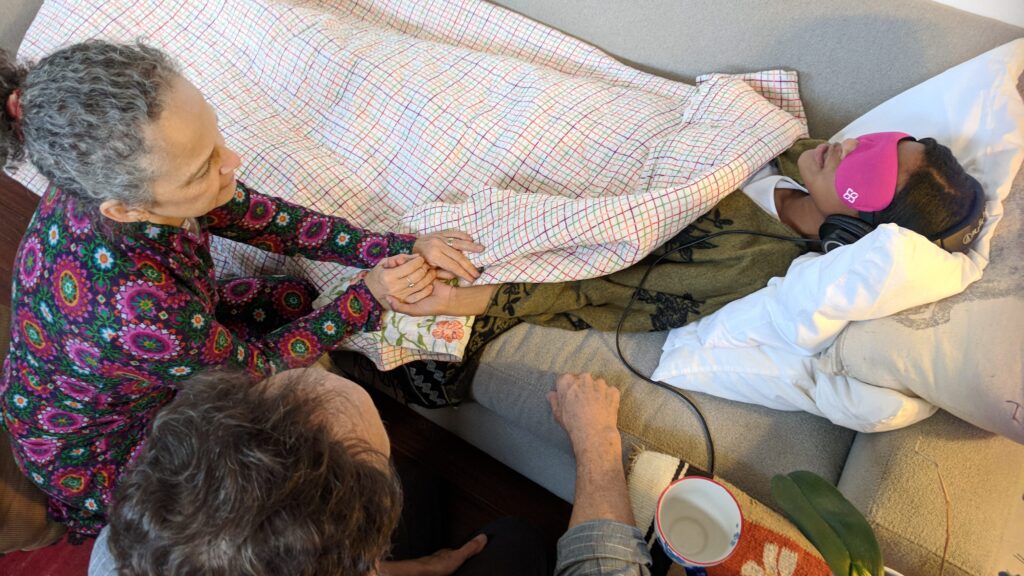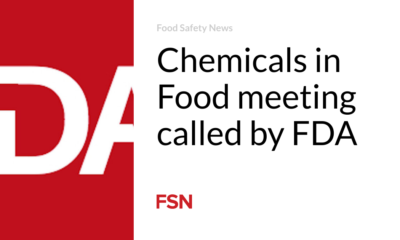Health
MDMA therapy for PTSD is close to an FDA decision

A The decades-long campaign to legalize MDMA as a mainstream medical treatment is set to come to a head as soon as Friday, with the Food and Drug Administration poised to decide whether to approve the psychedelic as a treatment for post-traumatic stress disorder in combination with psychotherapy.
Regulators face an Aug. 11 deadline to decide whether to sign off or reject the drug. The agency could also delay its decision if it needs more time to review the data and investigate claims of irregularities in Lykos Therapeutics’ clinical trials.
The push to legalize it is polarizing. Advocates, including many war veterans, say MDMA allowed them to overcome debilitating PTSD symptoms that did not respond to other treatments. Critics question Lykos’ ethics and the quality of its data. These doubts were raised during a controversial June meeting of an FDA scientific advisory panel, which overwhelmingly recommended the rejection of MDMA.
For a long time, it was almost a foregone conclusion that regulators would approve the psychedelic; two phase 3 studies had shown that the study was effective in improving symptoms of PTSD. There is a huge unmet need: no new therapy for PTSD has been approved in more than two decades. And the FDA accelerated the review process, designating MDMA a “breakthrough therapy” and signing off on Lykos’ study designs.
However, in March, a report from the Institute for Clinical and Economic Review cast doubt on whether Lykos had appropriately monitored serious side effects – particularly suicidal ideation – during the trials.
“If we get approval, there is still work to be done. If the FDA delays its decision, there is work to be done. Regardless of the outcome, we are still moving forward,” Lykos Chief Communications Officer Blair Clark-Schoeb told STAT this week.
Here you will find answers to frequently asked questions about MDMA therapy and psychedelics more broadly:
Where does MDMA come from?
MDMA is a synthetic drug that can act as a stimulant and mild hallucinogen, but is mainly considered an ’empathogen’: it can strengthen emotional bonds and feelings of empathy. It is a common party drug and is also called ecstasy or molly.
It was developed in 1912 by scientists at Merck, who were looking for a new compound to promote blood clotting. It was considered unremarkable at the time, not tested on humans or animals, and described in the patent simply as a “colorless oil, boiling point 155°C at 20mm pressure, the salt forming white crystals.”
MDMA was largely forgotten for decades. It was then rediscovered in the 1970s by Alexander Shulgin, a chemist from the University of California, Berkeley, who synthesized it and introduced the chemical to psychologist Leo Zeff, who investigated its use in psychotherapy.
It spread from therapeutic circles to the Dallas party scene, where it was considered one of the best known “yuppy medicine.” Increasing recreational use eventually led to a crackdown on MDMA: In 1985, the U.S. Drug Enforcement Administration classified it as a Schedule I drug. It was labeled illegal and regulators claimed it had high potential for abuse and no medical benefit was accepted.
If MDMA is approved by the FDA, it would be the first time a criminalized psychedelic has been formally recognized for its medical benefits since the war on drugs began more than half a century ago.
What is a psychedelic drug?
Psychedelics are best known for their mind-altering abilities: they can quickly alter one’s mood, thought processes, and one’s perception of reality. These substances can cause visual and auditory hallucinations and profoundly alter emotions.
People have used psychedelic substances for this purpose millenniaand they continue to be used medicinally and ritually among indigenous communities. Some of the best known are LSD, psilocybin, ketamine and MDMA.
The term ‘psychedelic’ is a neologism and means ‘mind-manifesting’ in Greek. It was invented in 1957 by Humphry Osmond, a psychiatrist at the University of Alabama, who studied them. He introduced substances such as mescaline and LSD to the author Aldous Huxley, who would later write books about altered states of consciousness, such as ‘The Doors of Perception’.
As Osmond once wrote in a letter to Huxley: “To fathom Hell or soar angelic/ Just take a pinch of psychedelics.”
How does MDMA work in the brain?
MDMA, or 3,4-methylenedioxymethamphetamine, creates a flood of certain neurotransmitters in the brain: it increases the levels of serotonin, dopamine and norepinephrine. Serotonin helps regulate mood, emotions and social behavior. Therefore, it is believed that the resulting wave can create feelings of emotional closeness, well-being and empathy.
The increase in dopamine is thought to create feelings of greater pleasure, and the increase in norepinephrine increases heart rate and blood pressure, increasing alertness and energy. After the drug wears off, neurotransmitter levels drop, which can cause fatigue, sadness, and irritability.
How does MDMA work in a therapeutic context?
It is not known how the drug may affect symptoms of PTSD or other mental health conditions. The neurochemical storm caused by MDMA is thought by some researchers to create a sense of trust, self-love and empathy, making it much easier to revisit and process traumatic memories during talk therapy. Patients with PTSD tend to struggle deeply with confronting past turmoil, so advocates say the drug eases the entry point into discussing old psychological wounds.
The approach advocated by Lykos is that MDMA is administered in a therapist’s office, under the supervision of two mental health professionals. Patients underwent non-psychedelic psychotherapy before the MDMA sessions, and again afterwards.
How Did MDMA Get to the FDA?
Rick Doblin – now a central figure in psychedelic research – and many other psychedelics advocates tried to lobby regulators to keep MDMA legal before the DEA’s 1985 decision. The following year, Doblin founded the Multidisciplinary Association for Psychedelic Studies, or MAPS – a nonprofit organization focused on advocating the medical and therapeutic benefits of psychedelics, especially MDMA.
MAPS, funded largely by donations from psychedelic enthusiasts, conducted early safety studies on MDMA and pushed for its reclassification. The work was slow, but it laid the foundation for subsequent psychedelic research, which had largely ceased at that point.
In 2004, MAPS began Phase 2 trials for MDMA-assisted psychotherapy for PTSD. In 2017, the FDA granted MDMA breakthrough therapy designation for the treatment of PTSD. This set the stage for a Phase 3 trial, which began in 2018 and supports Lykos’ efforts to gain FDA approval.
In 2014, MAPS formed a public benefit corporation, MAPS PBC, to promote the adoption of MDMA-assisted therapy. Last January it changed its name to Lykos Therapeutics.
What about the approval of MDMA for PTSD?
There is a huge unmet need for PTSD therapies: there have been no new treatments for the disorder in more than two decades. And the results of the MDMA-assisted therapy studies show that it can be incredibly effective: Some people say just three sessions cured their PTSD.
Earlier this week, over 60 Bipartisan lawmakers in the House of Representatives and Senate urged President Biden in a letter to approve MDMA-assisted therapy. And 19 senators wrote a similar letter to FDA Commissioner Robert Califf asking for the same thing.
Veterans groups in particular have been vocal in their advocacy for MDMA, saying the treatment could prevent many thousands of military vets with PTSD from taking their own lives.
The two Phase 3 trials of Lykos, which are being evaluated by the FDA, have produced some compelling data: the trials found that 67% and 71% of patients taking MDMA, respectively, no longer met diagnostic criteria for PTSD. This compared to 32% and 48% in the placebo groups.
What are the arguments against the approval of MDMA?
Much of the MDMA research leading to the drug’s possible approval has been conducted by psychedelic evangelists, which could undermine the results.
There are concerns from ICER, the FDA Advisory Committee, and patient testimonials that Lykos has not accurately reported patient suicidality. If that’s true, then the study data doesn’t reflect the risks – and there’s a chance that MDMA could actually worsen mental health symptoms in a vulnerable patient population.
Other concerns include the risks of sexual abuse of patients, given how vulnerable and dissociated they can be while undergoing therapy; and the small size of the trials and the expectation bias. Fewer than 200 people took part in the studies, and most patients could guess whether or not they had been given MDMA.
How does Lykos plan to reduce the risks of MDMA-assisted therapy?
If approved, the FDA will establish a REMS for Lykos – that is, a set of risk assessment and mitigation strategies to ensure the drug is administered safely.
Prior to that, Lykos recently announced this it is launching an independent advisory board to help plan a potential commercial launch – and to help inform therapy training. Lykos said it would only roll out the treatment at health care centers that have different layers of oversight for therapists — such as Emory University, Sheppard Pratt and Pacific Neuroscience Institute.
Are there any other psychedelic drugs approved?
Ketamine, an anesthetic drug first approved by the FDA in 1970, was used off-label for years to treat major depressive disorder, treatment-resistant depression, and suicidal ideation. And in 2019, the FDA approved Johnson & Johnson’s Spravato, or esketamine, a molecule structurally similar to ketamine.
Spravato is on its way to $1 billion on sale this year, suggesting that other psychedelic drugs could also be commercially viable.
Are there any other psychedelics in the pipeline?
Compass Pathways is hot on the heels of Lykos as Phase 3 trials are underway for psilocybin therapy targeting treatment-resistant depression.
There has been a flood of companies in the psychedelics space – research is underway into LSD, ibogaine, DMT, psilocybin, ayahuasca and others. Several startups are now focusing on second-generation modified psychedelics, and some are even working to remove the psychedelic component entirely – creating drugs that can boost neuroplasticity but have minimal psychoactive effect.
These are being studied in virtually every mental health condition, including addiction, anorexia, anxiety, depression, and others.









